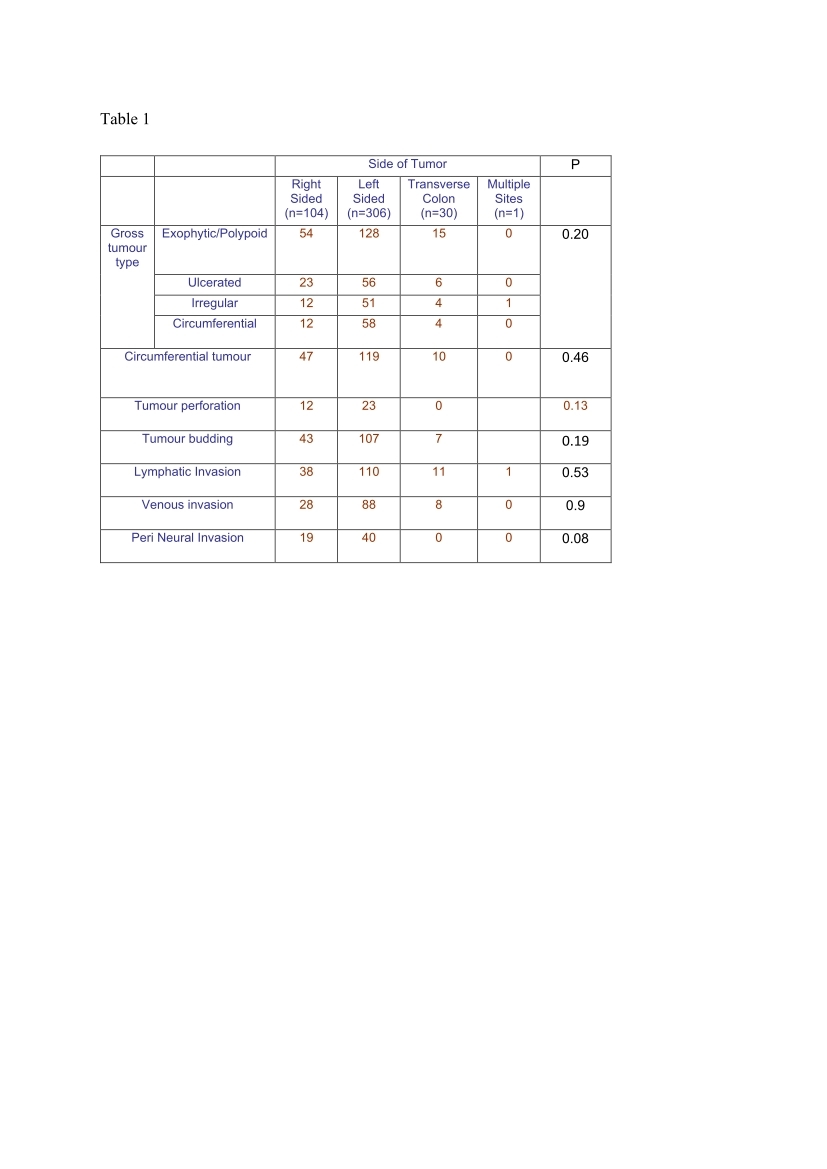TUMOUR BIOLOGY OF COLORECTAL CANCER IN SRI LANKA
Dakshitha Wickramasinghe*, Yathev Balathayalan, Chrisjit Xavier, Shazna Saleem, Nandadava Samarasekera
Department of Surgery, Faculty of Medicine, University of Colombo, Colombo 08, Sri Lanka
Introduction: The incidence of colorectal cancer (CRC) in Sri Lanka is increasing. Data on the pattern and tumour biology of CRC pathology in Sri Lanka is scanty. Adapting Western parameters without local validation is likely to result in inferior outcomes for patients.
Objectives: To identify the macroscopic and microscopic patterns and tumor biology in CRC.
Methodology: A retrospective review was done of all post-operative pathology reports of CRC patients from 2017 to 2020 at the National Hospital of Sri Lanka, Colombo. Macroscopic and microscopic features of the tumor, as well as relevant demographic data were collected and analyzed.
Results: A total of 424 reports were included, with 242 (57.1%) being males. The median age was 64 (IQR=12). Most common site of tumor was the sigmoid colon (n=146, 34.4%), followed by the rectum (n=101, 23.8%), and ascending colon (n=66, 15.6%). The median length of tumors was 45mm (IQR=30), and was significantly higher in right sided tumors compared to left (U=7200.5, p < 0.01). There were 171 (40.3%) circumferential tumors, of which majority were left-sided tumors (n=114, 66.7%). Gross appearance of most tumors was exophytic (n=193, 45.5%), while 82 of the tumors appeared ulcerated (19.3%). On microscopy, most tumors extended till the subserosal fat (n=223, 52.6%), while thirty-eight (9%) tumors extended to the serosa, and thirty-three (7.8%) showed tumor perforation. Tumor budding was seen in 157 patients (35.6%), and lymphatic, venous and perineural invasion were seen in 158 (37.5%), 123 (29%), and 57 (13.4%) patients respectively. The predominant histological type was adenocarcinoma (n=398, 93.9%), of which 19 (4.8%) were of mucinous subtype. Most tumors were moderately differentiated (n=369, 87%). There were four (0.9%) neuroendocrine tumors and three (0.7%) signet ring cell tumors. According to TNM classification, T3 was the commonest size of tumor (n=242, 57.1%). Spread to regional lymph nodes (N1or N2) was seen in 190 patients (47.3%), while distant metastasis was observed in 17 patients (4%).
There was no difference in the gross tumour type, circumferential lesions, tumour perforation, tumour budding or lymphatic, venous or perineural invasion (table 1).
Conclusion: Though Western data reports rectum to be the commonest site of CRC, sigmoid colon was the commonest in our data. Apart from this, trends and patterns in CRC pathology do not differ much from Western data. The TNM staging of tumors suggests that most patients present late. This indicates a need for assessing general awareness about CRC and improving healthcare seeking behavior among the Sri Lankan population.
Back to 2022 Posters
